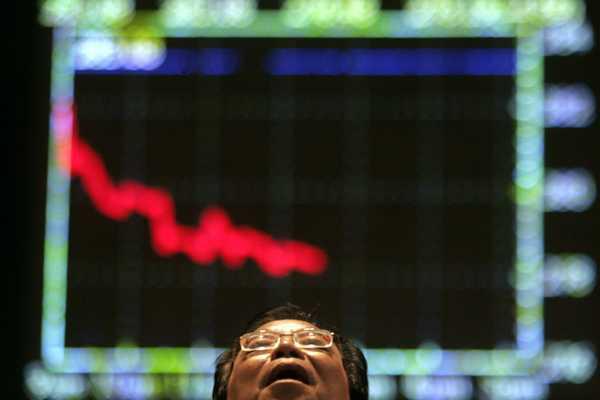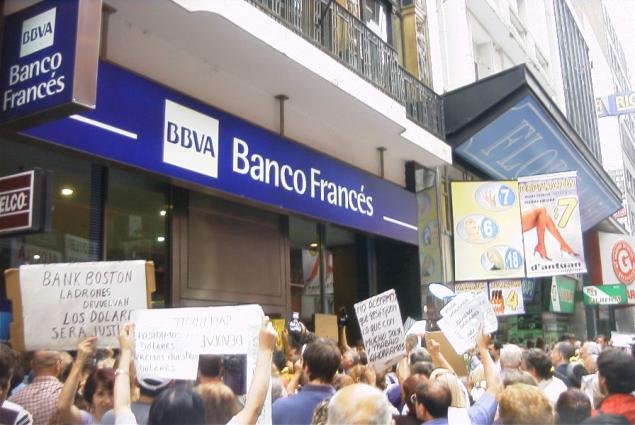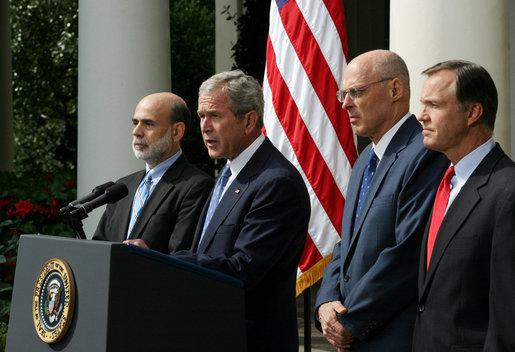The global financial crisis: from Asia to Argentina. How was it
 Bashny.Net
Bashny.Net
The Asian financial crisis of 1997-1998 - the economic crisis in Southeast Asia, which broke out in July 1997 and became a serious shock to the world economy in the late 1990s. Motivated crisis became extremely rapid growth of the "Asian tigers", which contributed to a massive influx of capital in these countries, the growth of government and corporate debt, overheating of the economy and the boom in the real estate market.
The Asian financial crisis has caused such political consequences, as the resignation of Indonesian dictator Suharto, the proclamation of the independence of East Timor and the split in the government of Mahathir Mohamad. In support of the thesis of the globalization of the world economy, the effects of the crisis quickly spread across the globe. Capital outflows and falling commodity prices contributed to the Russian economic crisis of 1998. The last echo of the crisis was the Argentine default in 2001.

The 1998 crisis in Russia. By the time the crisis began in Southeast Asia, it became clear that he was not a local, Russia was already thoroughly built into the system of world relations. To avoid a crisis, she could not. Crisis develops and begins to put pressure on the world economy. Index Dow Jones Industrial Average is experiencing a record drop in 10 years 7, 4%. Level of profitability Russian government short-term bonds (T-bills), through the sale of which the government covers the deficit begins to grow, respectively, grow and payment of the state in T-bills.
As a result, this leads to the fact that on August 17 1998, the State recognizes the inability to pay its debts. Central Bank and the government in a joint statement to announce the expansion of the exchange rate band from 6 to 9, 5 rubles. per dollar, three-month moratorium on the payment bank debt to foreign creditors and freeze all payments on T-bills and federal loan bonds by the end of 1998.
Dollar exchange rate in exchange offices immediately after the announcement of default grows to 6, 2 to 09.10 rubles. per dollar, and the currency exchange offices in most coming to an end. Prices of imported goods in shops throughout the weekend grow twice.

Argentine economic crisis
Occurred in the Argentine economy in the late 1990s - early 2000s. In terms of macroeconomic crisis began with the decrease in real GDP in 1999 and ended in 2002 with the return of GDP growth, but the reasons for the collapse of the Argentine economy and its impact on the population can be seen today. Sometimes crisis dates back to the years 2001-2002 only.
The culmination of the crisis were riots in December 2001, during which the country a wave of looting. At the same time, Argentina announced the largest default in history (132 billion dollars).

2007-2008 financial crisis - financial crisis, manifested in 2007-2008 as the mortgage crisis, bank failures and the fall in stock prices, which became the first stage of the global economic crisis of 2008-2012 (sometimes called the "great recession»).
The initial stage of the global financial and economic crisis served as a mortgage crisis in the US, the first signs of which appeared in 2006 in the form of reducing the number of home sales [1], and in the spring of 2007 escalated into subprime mortgage crisis (subprime lending (Eng.)) Pretty fast credit problems experienced and reliable borrowers. In summer 2007, the crisis of the mortgage began to grow into a financial and affect not only the United States. Began bankruptcy of large banks, saving banks by national governments. [5] highlights the bankruptcy of Lehman Brothers September 15, 2008. Quotes on the stock markets fell sharply during 2008 and early 2009. For companies significantly reduced the possibility of obtaining capital when placing securities. In 2008, the crisis has been global in nature and began to manifest itself in the widespread decline of production, reducing demand and commodity prices, rising unemployment.

The Asian financial crisis has caused such political consequences, as the resignation of Indonesian dictator Suharto, the proclamation of the independence of East Timor and the split in the government of Mahathir Mohamad. In support of the thesis of the globalization of the world economy, the effects of the crisis quickly spread across the globe. Capital outflows and falling commodity prices contributed to the Russian economic crisis of 1998. The last echo of the crisis was the Argentine default in 2001.

The 1998 crisis in Russia. By the time the crisis began in Southeast Asia, it became clear that he was not a local, Russia was already thoroughly built into the system of world relations. To avoid a crisis, she could not. Crisis develops and begins to put pressure on the world economy. Index Dow Jones Industrial Average is experiencing a record drop in 10 years 7, 4%. Level of profitability Russian government short-term bonds (T-bills), through the sale of which the government covers the deficit begins to grow, respectively, grow and payment of the state in T-bills.
As a result, this leads to the fact that on August 17 1998, the State recognizes the inability to pay its debts. Central Bank and the government in a joint statement to announce the expansion of the exchange rate band from 6 to 9, 5 rubles. per dollar, three-month moratorium on the payment bank debt to foreign creditors and freeze all payments on T-bills and federal loan bonds by the end of 1998.
Dollar exchange rate in exchange offices immediately after the announcement of default grows to 6, 2 to 09.10 rubles. per dollar, and the currency exchange offices in most coming to an end. Prices of imported goods in shops throughout the weekend grow twice.

Argentine economic crisis
Occurred in the Argentine economy in the late 1990s - early 2000s. In terms of macroeconomic crisis began with the decrease in real GDP in 1999 and ended in 2002 with the return of GDP growth, but the reasons for the collapse of the Argentine economy and its impact on the population can be seen today. Sometimes crisis dates back to the years 2001-2002 only.
The culmination of the crisis were riots in December 2001, during which the country a wave of looting. At the same time, Argentina announced the largest default in history (132 billion dollars).

2007-2008 financial crisis - financial crisis, manifested in 2007-2008 as the mortgage crisis, bank failures and the fall in stock prices, which became the first stage of the global economic crisis of 2008-2012 (sometimes called the "great recession»).
The initial stage of the global financial and economic crisis served as a mortgage crisis in the US, the first signs of which appeared in 2006 in the form of reducing the number of home sales [1], and in the spring of 2007 escalated into subprime mortgage crisis (subprime lending (Eng.)) Pretty fast credit problems experienced and reliable borrowers. In summer 2007, the crisis of the mortgage began to grow into a financial and affect not only the United States. Began bankruptcy of large banks, saving banks by national governments. [5] highlights the bankruptcy of Lehman Brothers September 15, 2008. Quotes on the stock markets fell sharply during 2008 and early 2009. For companies significantly reduced the possibility of obtaining capital when placing securities. In 2008, the crisis has been global in nature and began to manifest itself in the widespread decline of production, reducing demand and commodity prices, rising unemployment.

Tags
See also
2011 by Lego as it was
How it was
Nissan e-NV200 new minivan in the world of electric vehicles
Children adjustment: how it was (136 photos)
Special effects in "Star Wars" as it was
"Man on a knife edge" - John Carmack, milestone achievements and contribution to the game industry
How it works: Sewage big city
As it was— should we believe autobiographical memory
Fake eggs from China: how to do it and how to spot a fake
Appliances from the Soviet Union. As it was (17 photos)

















